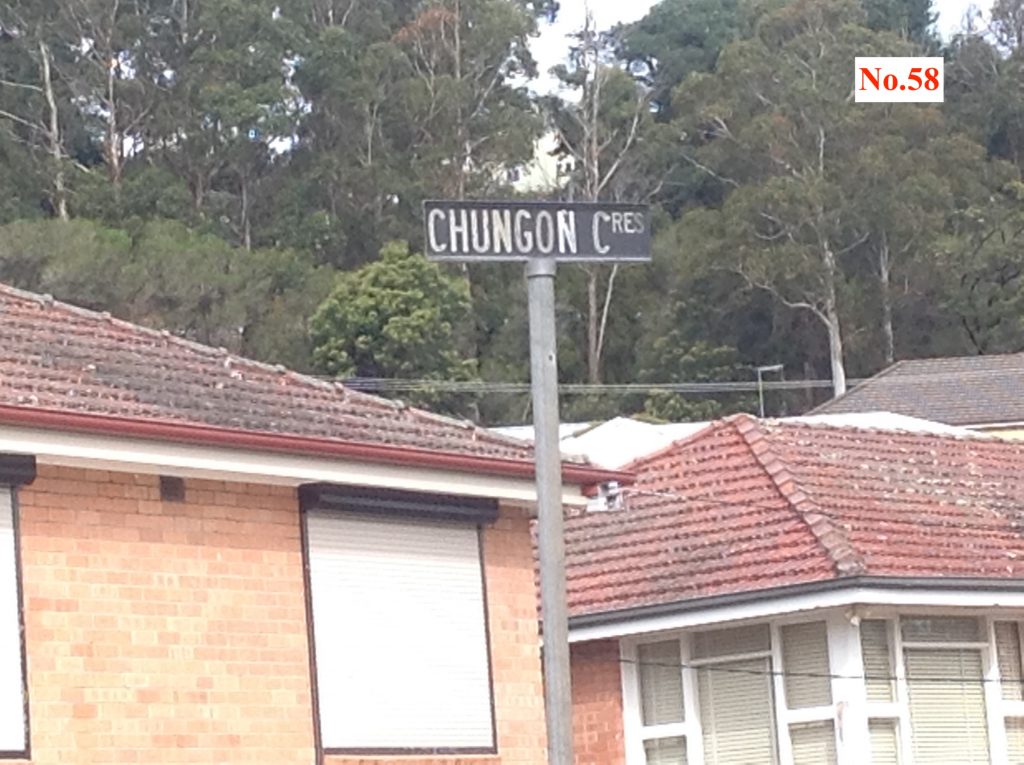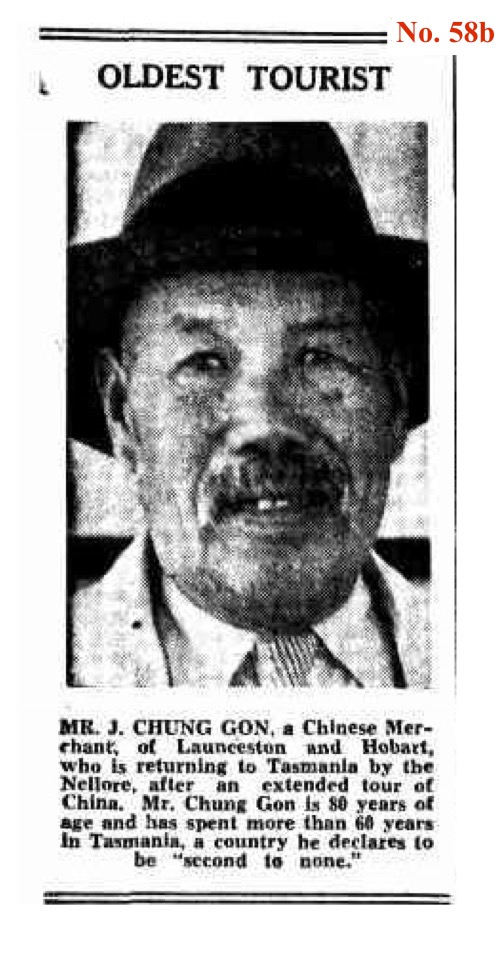
Chungon Crescent is a quiet suburban street located on a steep hill in the suburbs of Launceston. Its name marks the presence at one time of a market garden nearby that was the main one of three, plus at least two vegetable shops all owned by James Chung Gon from the 1920s through to the 1960s. (See No. 37)

Chung Gon, like many others, began his life in Tasmania on the tin fields of the north-east (see No. 38) but soon moved into supplying vegetables. In this activity he became very wealthy with Chung Gon and his family supplying at their peak most of the vegetables of Launceston. In this, Chung Gon’s story is little different from many Chinese market gardeners around Australia. However, Tasmania is not mainland Australia and the Chung Gon family became sufficiently prominent in Launceston and Tasmania that they were often featured in the social pages of the newspapers. Not, as was often enough the case elsewhere, as exotic “Chinese” in a white Australia but primarily as simply prominent and wealthy members of the community. On at least one occasion a wedding of a daughter of the family included the Tasmanian Premier as a guest.
James Chung Gon, like all China-born people (and non-white people in general) was not able to become an Australian citizen. (See No. 1) This feature of the White Australia policy was part of an ideology justified in part by the notion that Chinese people worked harder for less money and this threatened the livelihood of “white” workers. (See Adding to the Great White Walls) At the same time it was recognised that the dominance of Chinese men in market gardening was a positive for Australia and its continuance became embedded in the procedures of the White Australia bureaucracy.
What this meant among other things was that non-citizen James Chung Gon was able to bring in the very cheap labour from China to work his gardens that the White Australia policy was ostensibly designed to prevent. This was justified on the grounds that a market garden was a “Chinese” occupation and so a special case under the White Australia policy under which non-white people could enter under temporary exemptions (to the Dictation Test, see No.77). Nevertheless, by the 1950s the Chung Gon gardens, which then employed some 40 people, was mostly worked by European-Australians. In a final ironic twist of the White Australia policy, when in 1956 the Australian citizen daughter of James, Dorothy Chung Gon, applied to bring in some workers from Hong Kong, she was informed that as an Australian-born person this was not possible.
See here for more on Chinese Tasmanian history

